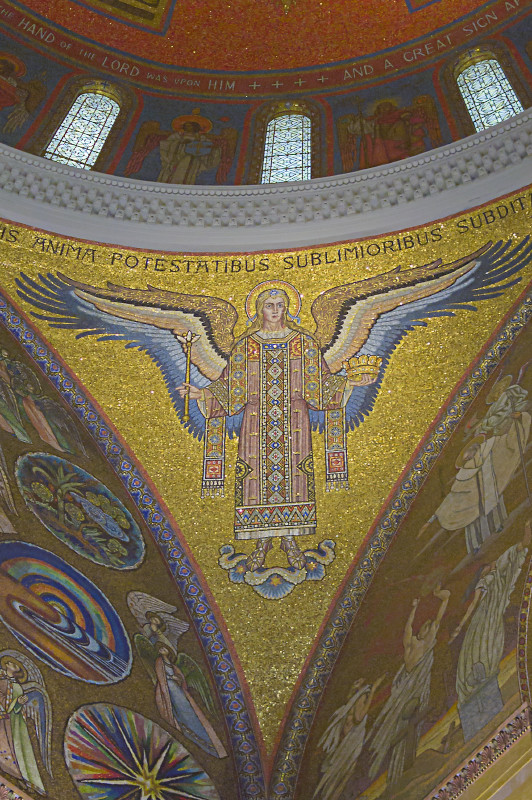Hence, following that via pulchritudinis that the Servant of God Paul VI indicated as fecund itinerary of theological and Mariological research, I would like to note the profound syntony [resonant harmony] between theological and mystical thought, the liturgy, Marian devotion and the works of art that, with the splendor of colors and shapes, sing the mystery of the Assumption of Mary and her heavenly glory together with her Son. Among the latter, I invite you to admire two of them that are particularly significant in Rome: the mosaics of the apse of the Marian Basilicas of St. Mary Major and Santa Maria in Trastevere.The via pulchritudinis, or Way of Beauty, has been a constant inspiration for the People of God, dating at least as far back as the Old Testament's tabernacle in the wilderness, which was richly and magnificently decorated — it wasn't a mere tent.
Theological and spiritual reflection, liturgy, Marian devotion, and artistic representation truly form a whole, a complete and effective message, capable of arousing the wonder of eyes, of touching the heart and of enticing the intelligence to a more profound understanding of the mystery of Mary in which we see our destiny reflected clearly and our hope proclaimed.
Therefore, I take advantage of this occasion to invite experts in theology and Mariology to follow the via pulchritudinis, and I hope that, also in our days, thanks to a greater collaboration between theologians, liturgists and artists, incisive and effective messages can be offered to the admiration and contemplation of all.
— Pope Benedict XVI, December 17th, 2010; Address to the Pontifical Academies [source]

This Way of Beauty can be found in our greatest churches; earlier today I went on a guided tour of the Cathedral Basilica of Saint Louis — which is otherwise quite familiar to me — and the docent pointed out many things I've never noticed before. The structure and mosaics of this great church are simultaneously beautiful and are intensely integrated with liturgy and theology.
The Marian elements of this church are less clear, although there is a very beautiful chapel to the Virgin here. However, until recent decades, Catholic churches were always built on a distinctly feminine model, most particularly in the interior. This is supremely Marian in an analogical sense, for we speak of Holy Mother Church, and Mary as the Mother of the Church; and this femininity had served Christendom very well. The newer utility-seeking and beauty-denying masculine model of church architecture, as found in Modernism and its derivatives, has the effect of marginalizing not only Mary but also Christ, and ought to be considered a great failure for the Church.
In Advent, we await the coming of Christ, and in Christmas we celebrate His incarnation. Christianity is not a purely spiritualistic religion, for we know that matter itself can be redeemed and ennobled. For this reason, Advent and Christmas anticipate and celebrate God made flesh; but these are also distinctly Marian seasons, for a woman was raised to great dignity in this material world. Likewise, faithful artists, if they make in the way that they were themselves made, can ennoble and raise up mere matter — a process that some call subcreation, which finds its highest calling in the liturgical arts.


No comments:
Post a Comment